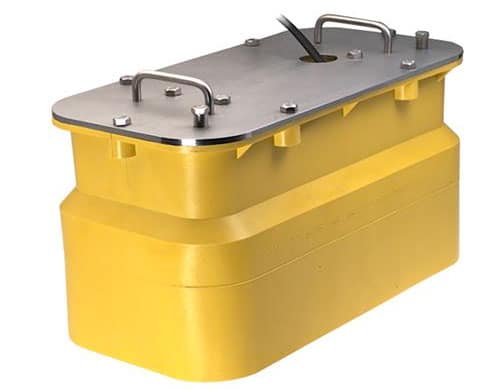
Q. How can I install my fish finder’s transducer inside my boat so I don’t have to drill a hole in the hull?
A. Most marine-electronics brands offer an inside-the-hull transducer kit that can be fastened to the hull’s interior. This will work only with solid fiberglass hulls (excluding balsa core or laminated hull construction that might contain air pockets).
Expect some signal loss. It is best to choose a location that has a flat surface. Bends in the hull have thicker layers of fiberglass that can reduce the depth range of the transducer signal.
Pick a spot where nonturbulent water passes beneath the boat. Make sure no through-hull fittings or other protrusions are positioned forward of the location. These can cause turbulence that might interfere with the sonar signal.
Test the spot by wetting the face of the transducer and the hull with water, and place the transducer inside a plastic bag filled with water. Wet the outside of the bag, and hold it close and tight to the hull. Check your fish finder’s performance at the depths you expect to operate.
Inside-the-Hull Mounted Transducers
Here are some of the advantages and disadvantages of an inside-the-hull mounted transducer, also known as a “shoot-through” transducer.
On the plus side:
* No holes in the hull
* Good high-speed performance
* No protruding obstructions outside the hull that might increase drag
* No need to have a diver clean the surface of the transducer
* No haul-out required
* You can do the installation yourself
* Minimal expense
* Simplifies taking boats on and off a trailer
On the downside:
* Reduced depth range (varies with hull thickness)
* Can reduce the ability to detect fish
* Limited to pure fiberglass hulls; cannot be installed on hulls with structural foam or air gaps that can contain air pockets or air bubbles
* No ability to display seawater surface temperature like you can with a through-hull transducer
Here are some common inside-the-hull transducer models for deepwater applications from Airmar Technology (airmar.com) and used by many fish finder brands:
P79 — Plastic hull-mount kit (600 watt), single or dual frequency (50/200 kHz), which can be adjusted from 2 to 20 degrees to accommodate for the hull’s deadrise. Possible depth range is 800 to 1,200 feet. This is also good for rigid inflatable and race boats ($179).
M260 — This high-power transducer can penetrate down to as much as 3,000 feet ($1,100 for 1 kilowatt/$2,800 for 2 kilowatts). These are used with fish finders rated at these power levels.
M265C — 1 kW (1,000 watt) chirp transducer ($1,600) used in deepwater applications down to 3,000 feet.
R111C — 2 kW chirp transducer ($3,150) used for applications down to 8,000 feet.
R599C — 2-3 kW chirp ($4,800) depth reading down to 10,000 feet.
You can view and download detailed specifications, performance capabilities, signal beam widths, dimensions, brochures and installation instructions at airmar.com.
DIY Inside-the-Hull Transducer Installation
Fabricate a small watertight sea chest or water box with a removable top using plastic, wood or fiberglass (a PVC tube or pipe of adequate diameter with a threaded end and matching screw on the cap will do). Provide a fill spout and cap to add fluid. Cut and position the base of the housing so it will be mounted vertically. Secure the housing to the hull with Marine-Tex for a watertight seal. Mount the transducer through a hole cut in the top of the housing with the face of the transducer facing downward.
Inside-the-hull transducers should be filled with propylene glycol (which is a nontoxic antifreeze that is available at Wal-Mart and other retail outlets) to prevent algae and other growth from collecting inside and will not harm transducers.
Alternately, you can fasten a small, lightweight plastic depth transducer to a flat spot inside the hull. Apply a silicone seal to the location, and press the face of the transducer into the silicone using a circular motion to get the transducer as close to the hull as possible. An advantage here is that if it doesn’t work well at this location, you can always remove the transducer and peel off the silicone without damage to the transducer.







